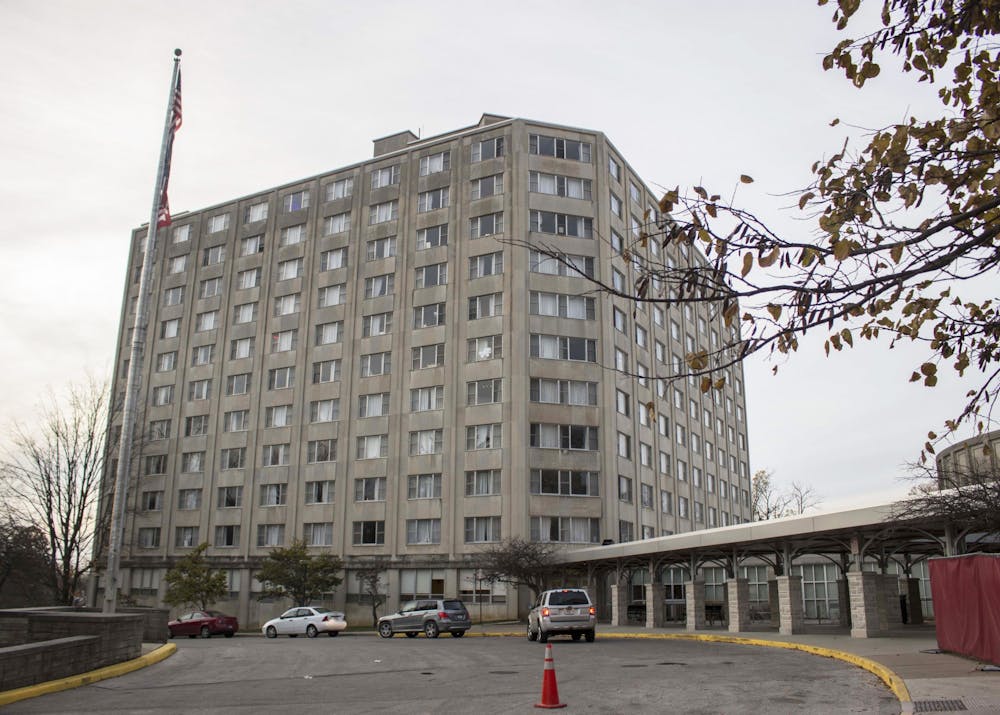As with virtually everything on campus, student housing in the fall semester will look very different.
In residence halls, a majority of students will have single occupancy rooms — aside from those who request roommates. Large gatherings will be replaced by virtual events. Students must wear masks in shared spaces, such as lounges, bathrooms, laundry rooms and dining areas. Physical distance policies will be put in place. Dining halls will offer takeout only. Plexiglass will be installed between sinks in bathrooms, and stricter cleaning regimens will be implemented. Overnight guests will no longer be allowed in any IU housing. Additionally, first-year students will no longer be required to live on campus.
IU spokesperson Chuck Carney said while he doesn’t know specific numbers, more than half of students will live in single occupancy rooms.
According to the RPS website, double rooms converted to single rooms will cost 15% to 25% more for the cost per student.
If students have financial concerns, Carney said students can request to be moved to a different residence hall with a cheaper living cost.
RPS officials refused requests for comment.
Carney also said that the total number of students living in on-campus housing this fall will be approximately 10,000, while it has averaged around 11,500 to 12,000 in previous years.
McNutt, Foster and Teter were previously closed due to a mold problem but will be open for the fall, providing more flexibility for single occupancy housing. The Indiana Memorial Union Biddle Hotel will also offer additional student housing.
In keeping with guidelines for COVID-19, Carney said Ashton has been designated for quarantine housing, where staff will be present to check in with students and provide resources. For testing, Carney said students will be encouraged to download the IU Health app, which will include a symptom checker and virtual screening process. Based on that assessment, testing will be provided from the health center. All students living on campus must also get tested within 10 days of arrival to campus.
Graham McKeen, assistant university director of public and environmental health, is on President Michael McRobbie’s restart committee. He said a case management team will be implementing contact tracing whenever someone tests positive. He said the team will also maintain a robust dashboard to monitor cases across campus.
Tom Hrisomalos, IU Health Southern Indiana Physicians infectious disease specialist, noted concerns with bringing large numbers of people back on campus.
“How safe we are depends on what is going on in the community in terms of disease transmission and how careful people are with following the guidelines to prevent transmission,” he said.
He emphasized the importance of wearing masks, sanitizing, social distancing and avoiding large gatherings as much as possible.
“It doesn’t work if half the people are doing it and half the people are not,” Hrisomalos said.
He said there is a risk for an outbreak.
“You’re bringing a lot of people together,” he said. “We know that being in close proximity is what allows this virus to spread. I think there is a risk. I think that students that come back to IU need to take this infection very seriously.”
Hrisomalos warned that 40% of all individuals infected with COVID-19 are asymptomatic, which could further place people at risk of spreading the virus unknowingly.
Carney said IU will be monitoring things as they develop, and things are subject to change. RPS has not yet decided whether it will refund students in case they are sent home due to an outbreak or for COVID-19-related reasons.




